Disclosure: This post may contain affiliate links. I may earn a small commission for my endorsement, recommendation, testimonial, and/or link to any products or services from this website.
A quick, easy version of old-fashioned Boston Brown Bread! Studded with raisins, this sweet brown bread is dense, moist and full of rich molasses flavor. Top a slice with cream cheese for breakfast, make tea sandwiches for snack, or add it to the bread basket for your next family dinner. You only need one bowl and about 10 minutes of prep — no coffee cans required!
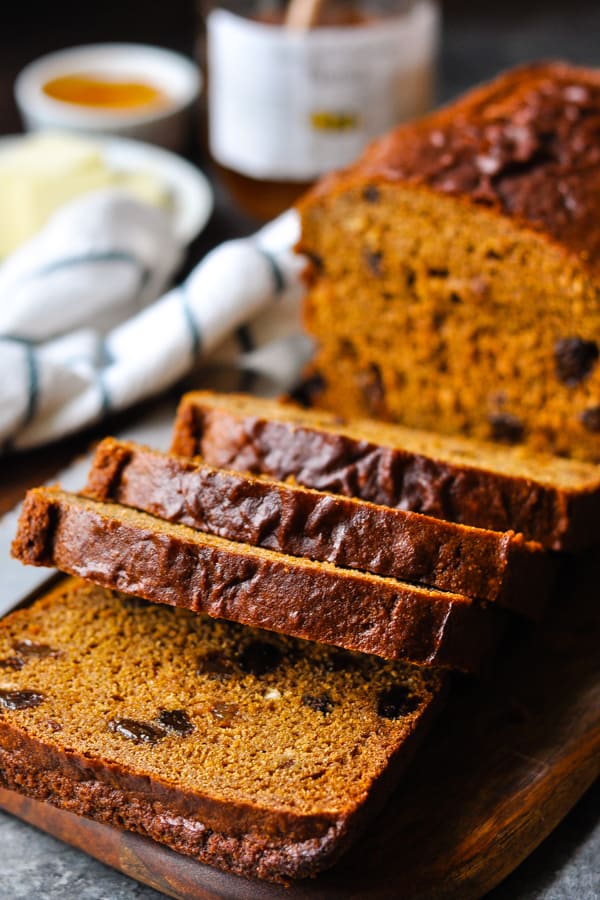
Boston Brown Bread Recipe
Not to be confused with brown yeast breads like pumpernickel or those sweet loaves you get at Outback or Cheesecake Factory, this brown soda bread is a quick bread traditionally steamed in coffee cans. Since most of us don’t buy coffee grounds in cans anymore, I wanted to create an updated version of old-fashioned Boston Brown Bread that’s made in a loaf pan — just like banana bread or pumpkin bread.
What does Boston Brown Bread taste like?
Boston Brown Bread, also called New England Brown Bread, is a slightly-sweet molasses quick bread. Made with whole wheat flour, the bread has a mildly nutty, hearty taste and a rich molasses flavor that’s reminiscent of gingerbread (but not quite as sweet and cake-like). The bread often includes raisins or nuts for even more satisfying flavor and texture.
Brown Bread in a Can
Traditional Boston Brown Bread was made with a variety of flours such as cornmeal, rye, whole wheat and graham flours. The batter was poured into coffee cans and the bread was steamed in a large kettle until cooked through.
If you’re like me, you probably don’t keep rye and graham flours on hand, and you probably don’t have a shelf full of empty coffee cans lying about. Instead, this quick Boston Brown Bread recipe uses a combination of easily-found whole wheat and all-purpose flours, and is “steamed” in a loaf pan in the oven. So simple, and so delicious!
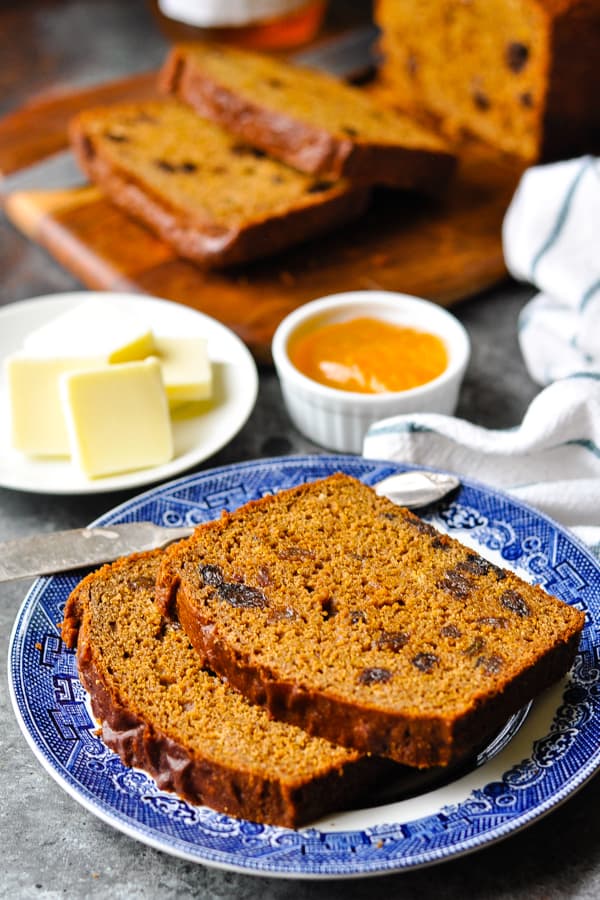
How to Make Brown Bread
Since this whole wheat molasses bread is a “quick bread,” there’s no yeast necessary, no rising or proofing time, no kneading, and no mixer to haul out onto the countertop. The entire loaf comes together in about 10 minutes with just one bowl to wash at the end, making this a very easy recipe for quick brown bread. That’s my kind of baking!
Ingredients for a Molasses Brown Bread Recipe
- Whole wheat flour
- All-purpose flour
- Baking soda
- Salt
- Buttermilk
- Molasses
- Raisins
Step 1: Sift Dry Ingredients
In a large bowl, sift together flours, baking soda and salt.
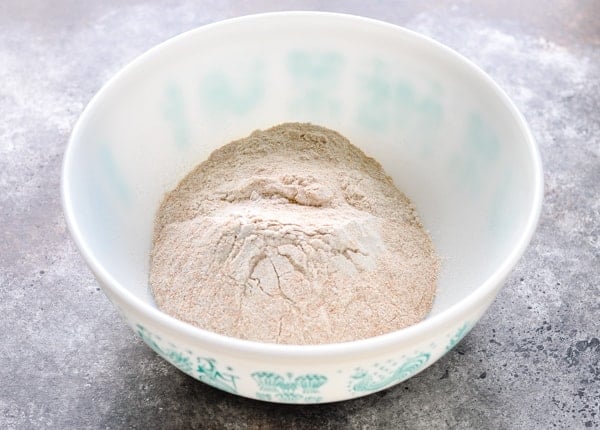
Step 2: Add Wet Ingredients
Gradually stir in the buttermilk and molasses, mixing just until combined. Do not over-mix.
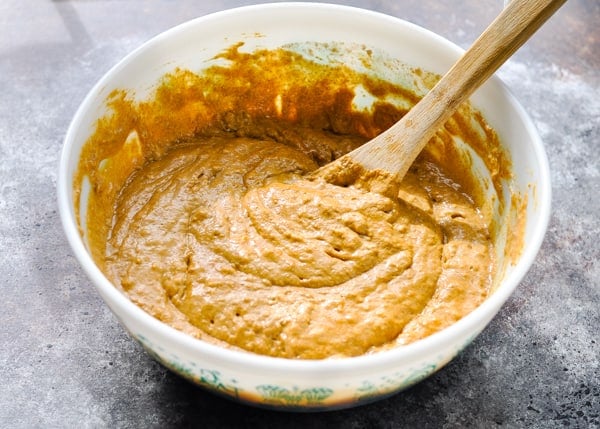
Step 3: Fold in Raisins
Stir in the raisins, just until combined.
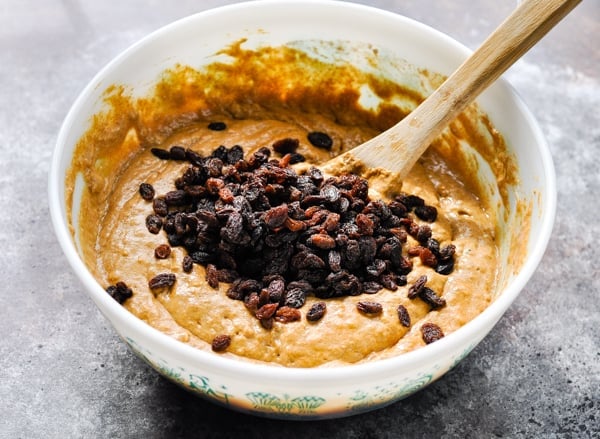
Step 4: Bake
Transfer the batter to a greased loaf pan, cover with greased foil, and bake in a 325 degree F oven for 50 minutes. Remove the foil and bake for 10 more minutes, or until a toothpick inserted in the center comes out clean. Transfer to a wire rack to cool completely.
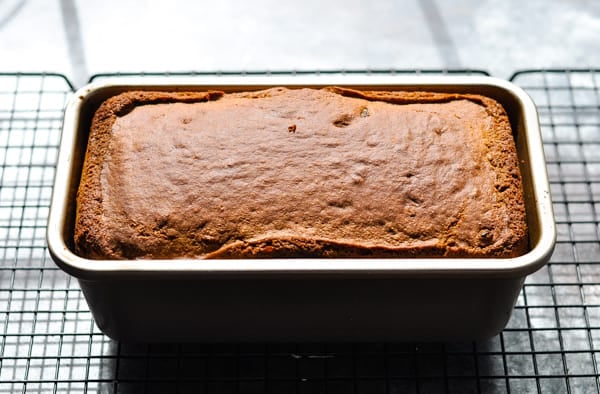
Step 5: Slice and Serve
Once the bread is cool, slice and serve!
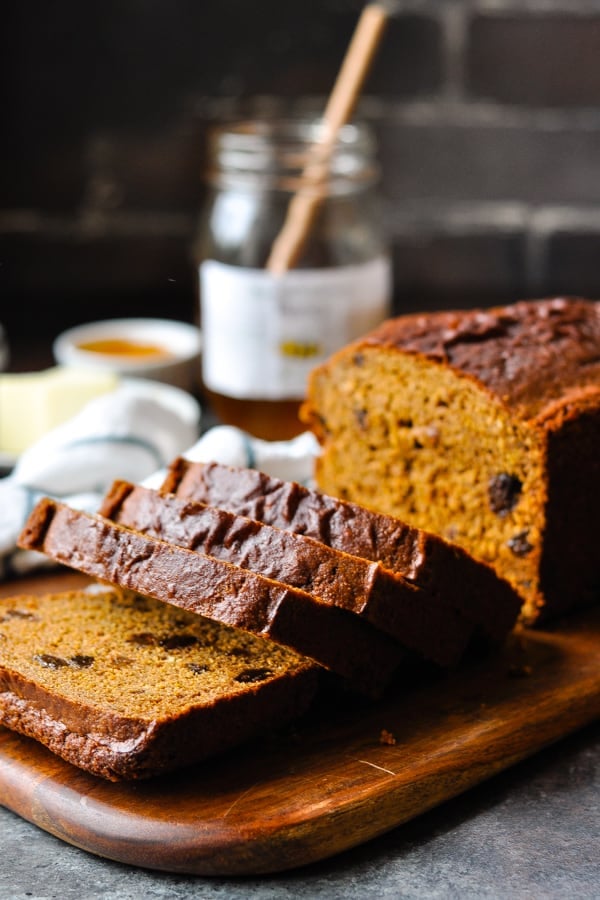
What goes with Boston Brown Bread?
Steamed cans of Boston Brown Bread are often served in New England alongside baked beans and franks — and that’s still a great way to enjoy the bread today.
The simple, rustic soda bread is also delicious served on its own at room temperature. Smear it with butter or cream cheese, top with a dollop of orange marmalade, drizzle with honey, or pair it with eggs or yogurt for breakfast.
At dinner, the bread goes well with any of these meals:
- Slow Cooker Cowboy Pork and Beans
- Farmhouse Beef Stew
- Cornflake Chicken
- Dutch Oven Chicken
- Crispy Roast Chicken
- Chili con Carne or “Good Luck” Southern Chili
- Smothered Pork Chops
- Dutch Oven Pot Roast
- Sour Cream Chicken
- Apple Cider Pulled Pork
- Farmhouse Chicken and Noodles
Tea Sandwiches Using Boston Brown Bread
You can also use the bread for little tea sandwiches filled with cream cheese, butter, or savory meats. Here are a few flavor options to get you started:
- Mix cranberry sauce and Dijon mustard, add smoked turkey;
- Spread cream cheese and fresh dill on the bread and top with smoked salmon;
- Egg salad;
- Cream cheese thinned with a little bit of milk and mixed with crushed or diced pineapple, then spread on the brown bread;
- Apricot preserves mixed with cream cheese and topped with ham;
- Classic peanut butter and jelly!
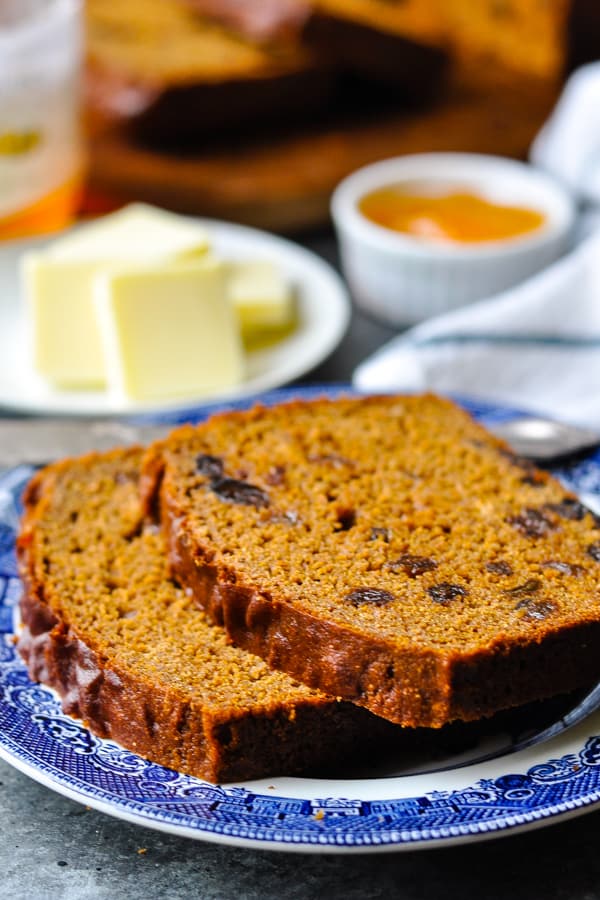
Storage
Always wrap your loaf in plastic wrap or foil to prevent it from drying out. The bread will stay fresh at room temperature on the counter for 2-3 days, and it will last in the refrigerator for up to 5 days.
To Freeze: Cool the loaf completely, wrap tightly, and freeze for up to 3 months.
Tips for the Best Molasses Brown Bread
- Be careful not to over-mix the batter. Add the wet ingredients to the dry ingredients just until they’re combined. Too much mixing and the bread will come out tough or dry. The key to keeping a quick bread moist is NOT over-mixing.
- Omit the raisins altogether, or use dried cranberries, chopped dates or currants instead.
- Add chopped nuts such as walnuts or pecans for a bit of crunch.
- Grease the loaf pan really well or spray with a non-stick baking spray so that the bread pops right out.
- The buttermilk is an important ingredient in this recipe. The lactic acid in the buttermilk reacts with the baking soda to form tiny bubbles of carbon dioxide, which helps the bread rise. Don’t substitute with a different milk.
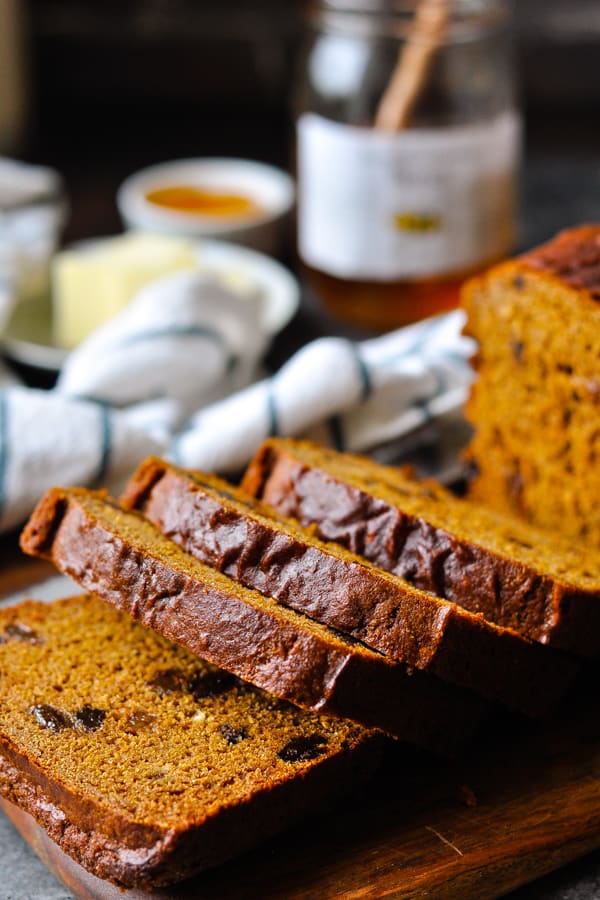
More Quick Bread Recipes to Try
- Irish Soda Bread
- Morning Glory Farm Zucchini Bread
- One Bowl Whole Wheat Banana Bread
- No-Knead 3-Ingredient Beer Bread
- Apple Bread
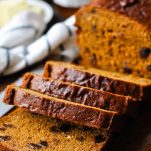
Sweet Molasses Boston Brown Bread
Ingredients
- 1 cup whole wheat flour
- 1 cup all-purpose flour
- ¾ teaspoon baking soda
- ¾ teaspoon salt
- 1¼ cups buttermilk
- ½ cup molasses
- ¾ cup raisins
Instructions
- Preheat oven to 325° F. Spray an 8½ x 4½-inch loaf pan with cooking spray and set aside.
- In a large bowl, sift together wheat flour, all-purpose flour, baking soda and salt. Gradually stir in the buttermilk and molasses, mixing just until combined (do not over-mix). Fold in raisins.
- Transfer batter to prepared pan, and cover it with buttered (or sprayed) aluminum foil, pressing the foil tight around the edges of the pan (so that the bread will steam a bit), but ballooning it in the center, so that the bread has room to expand without hitting the foil. Bake for 50 minutes. Remove the foil (the middle may be slightly sunken; that's OK), and bake for an additional 10 minutes, or until a toothpick inserted in the center comes out clean.
Notes
- Be careful not to over-mix the batter. Add the wet ingredients to the dry ingredients just until they’re combined. Too much mixing and the bread will come out tough or dry. The key to keeping a quick bread moist is NOT over-mixing.
- Omit the raisins altogether, or use dried cranberries, chopped dates or currants instead.
- Add chopped nuts such as walnuts or pecans for a bit of crunch.
- Grease the loaf pan really well or spray with a non-stick baking spray so that the bread pops right out.
- The buttermilk is an important ingredient in this recipe. The lactic acid in the buttermilk reacts with the baking soda to form tiny bubbles of carbon dioxide, which helps the bread rise. Don’t substitute with a different milk.

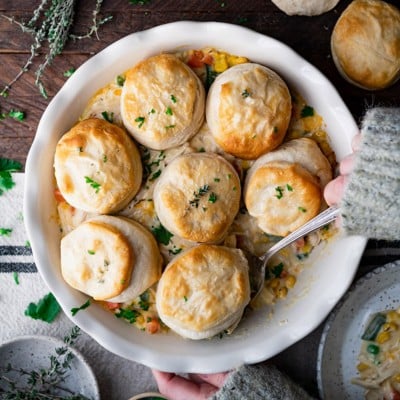
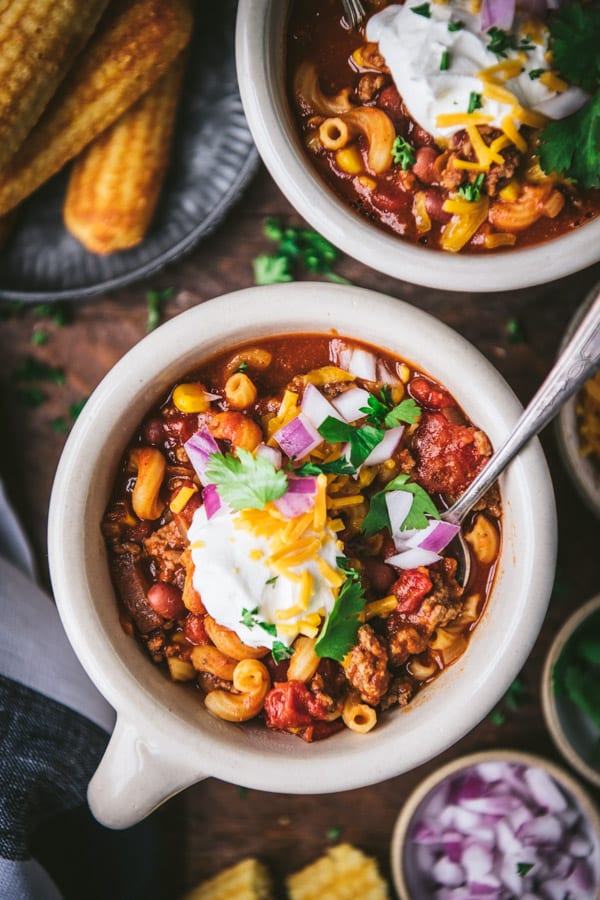
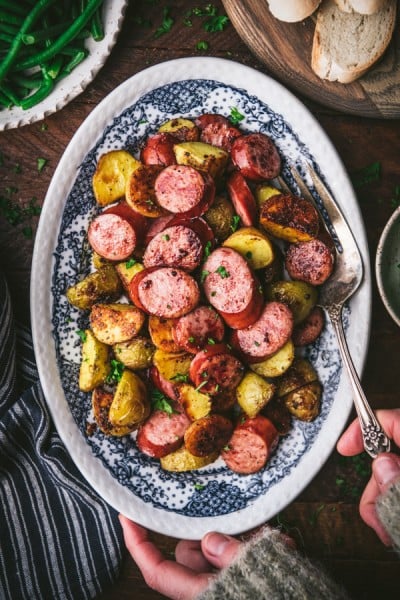








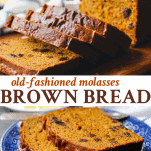
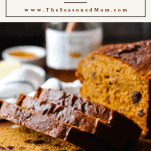
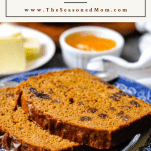
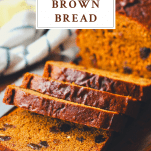
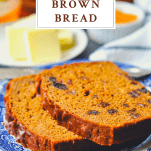
The recipe turned out so delicious. Thanks for sharing.
Thank you!
about identical to my old recipe, but I bake a loaf in a large (48oz) juice can, sides & bottom thoroughly greased & dusted with cornmeal, tightly covered with foil. Too tasty to make only one at a time, though, so I doubled for a family of 6. Keeps nicely in a plastic bread bag, in the fridge, doesn’t stay around long, though!
I have made the traditional steamed version from a recipe from my grandmother who got it from her mother. Not sure how far back it goes… Our recipe is a combination of whole wheat and rye flours and cornmeal. I’d have to check for the ratio, but the different flours add great texture and flavor! The rest of the recipe is very similar. I might try my next batch in a loaf pan…
Hey, Sarah! Yep, that flour mixture is definitely the more traditional combination. I mentioned in the post that I use just the wheat and all-purpose flours to keep it easier and more simple (since those two flours are much easier to find and store in the kitchen). I’d love to hear how you like this modified version if you give it a try!
Can I use sour milk instead of the buttermilk?
Hi, Annabelle! Yes. 🙂
I remember eating boston brown bread as a kid. Mom didn’t make it but as a treat for my dad and me she would buy the bread in a can. We usually ate it with butter or cream cheese. So it was going to be a trip down memory lane to have boston brown bread. But I had problems! Getting ingredients and mixing were fine. As I put the bread into the 8 X 4 pan it looked too full, and it was. It ran over and I had chard remains on the oven floor. I baked it the 45 minutes at 350, removed it from the pan and the middle fell in as it cooled. And the middle definitely was not done. I was sad, We ate what we could but much was too raw.
I suggest you retest this recipe for pan size and time. Most of your other recipes I have used we have enjoyed so I won’t give up on you.
Hi, Pat! Thanks so much for your feedback! I had tested the recipe a handful of times before posting, with great luck each time. I always use a very thick real buttermilk that I buy at a local country market, so this afternoon I picked up store-bought cultured buttermilk from the grocery store (which has a thinner texture) to test with that version. The batter was definitely thinner, but it still worked fine in the loaf pan without running over and was done in about 40 minutes. I wonder if you accidentally measured too much liquid for your batter? If the batter was too wet from too much liquid, that would explain why it didn’t cook through.
But! You’ve now inspired me to go down the brown bread rabbit hole again. 🙂 I’m testing a couple of more loaves with smaller measurements for all of the ingredients — to make a smaller loaf. I also want to test baking it covered so that it gets that “steamed” consistency of the traditional loaves made in coffee cans. Stay tuned, because I’ll adjust the recipe if I think the oven-“steamed” smaller loaves taste even better. Again, I always appreciate feedback and I’m happy to tweak things if it might make the recipe even better. Have a great week!
Mine come out awesome
Great! Thanks, Jeremy!
Just finished baking a loaf, so I’m not sure of the end result yet because it is now cooling. A couple of comments: I thought the layout of the page was confusing. Why not add the measurements of each ingredient at the beginning instead of the users having to scroll around to find what they are? Secondly, in the beginning of the page where you give instructions of mixing the ingredients, you tell us to ADD THE WET INGREDIENTS TO THE DRY INGREDIENTS, while near the bottom of the page you instruct to do the opposite, adding that if we add the wet ingredients to the dry ingredients we will get a dry loaf. YIKES! I following your instructions at the top of the page and added the wet to the dry. Now, I’m expecting to have a loaf drier and harder than I would like. Huge disappointment.
Hi, Bonnie! I’m sorry that you found the instructions difficult or confusing, but I hope that you were able to enjoy a delicious loaf of bread in the end. My tip was to add the ingredients together gradually and not to over-mix in order to avoid a dry loaf of bread. Adding the wet to the dry or the dry to the wet shouldn’t impact the consistency of the loaf. It’s stirring too much and activating too much gluten that can cause baked goods to be tough or dry. Hope that makes sense! 🙂
Almost always on recipes there will be “jump to recipe” (sometimes real small)so you dont have to scroll thru many readers enjoy the actual blog parts as well as recipes. I used left over rum and vanilla soaked raisins,so good Nextel days toasted with cold cream cheese
Thanks, Lynn! Yes, there’s always a “Jump to Recipe” button on my blog posts at the top. Hopefully that makes skipping ahead more convenient. 🙂
Taste just like Mom used to make and so easy forget the coffee can~ this is great.
Thank you, Jill! I’m so glad that you enjoyed it! 🙂
Excellent. Recipe is spot on.
Thank you, Jim! I’m so happy to hear that. 🙂
I made 3 small cans & steamed them , it came out way too wet, I can’t wait to try the loaf recipe, as my son has said he misses the brown bread is a can , he is almost 44 years old, so I want to make it again for him & my husband & myself, thanks so much !!!
I made 3 small cans & steamed them , it came out way too wet, I can’t wait to try the loaf recipe, as my son has said he misses the brown bread is a can , he is almost 44 years old, so I want to make it again for him & my husband & myself, thanks so much !!!
I made the bread and I did it exactly as called but the centre was raw. I tested it and it was
pulling away at the sides. I only got two slices on each end that were good.
Sounds like it just needed more time in the oven, Joan. All ovens are different, and the total baking time can also vary depending on the type of pan that you use (glass, metal, dark, light, ceramic, etc.). As a result, it’s best to check with a toothpick to make sure that the center is cooked through before removing from the oven.
Oh, great! I hope that your son loves it! 🙂
I am trying the brown bread tomorrow.
Never tried it before so here it goes.
Please let us know how it goes, Shela! If you have any issues we’re happy to help troubleshoot.
about identical to my old recipe, but I bake a loaf in a large (48oz) juice can, sides & bottom thoroughly greased & dusted with cornmeal, tightly covered with foil. Too tasty to make only one at a time, though, so I doubled for a family of 6. Keeps nicely in a plastic bread bag, in the fridge, doesn’t stay around long, though!
We’re glad you were able to make it work for you and enjoyed it! Thank you for the feedback, Marina.